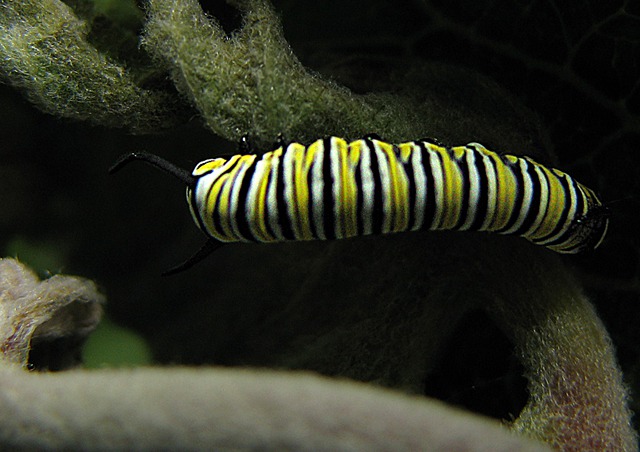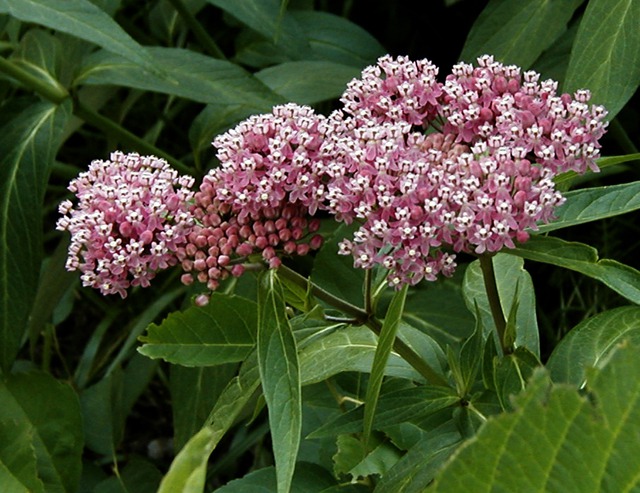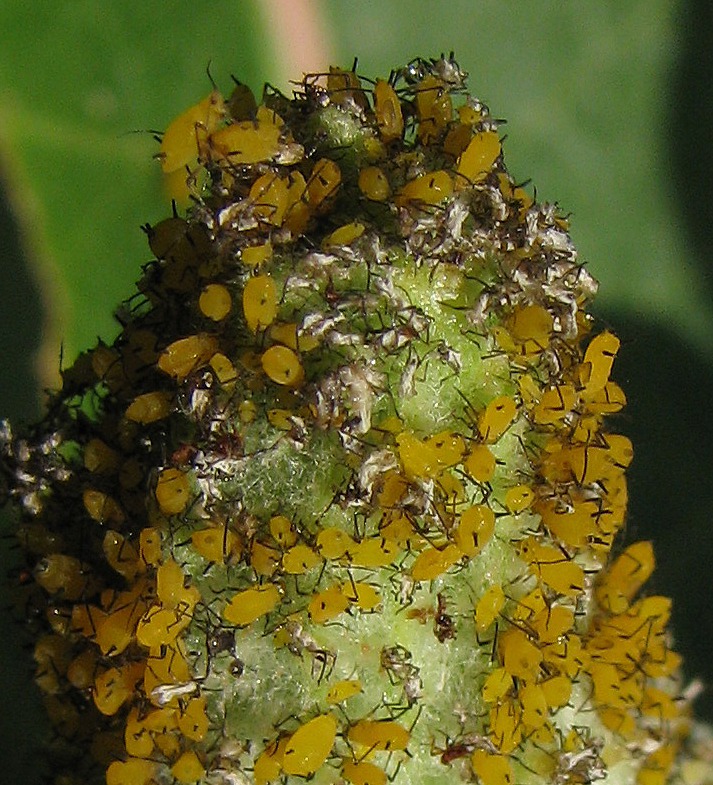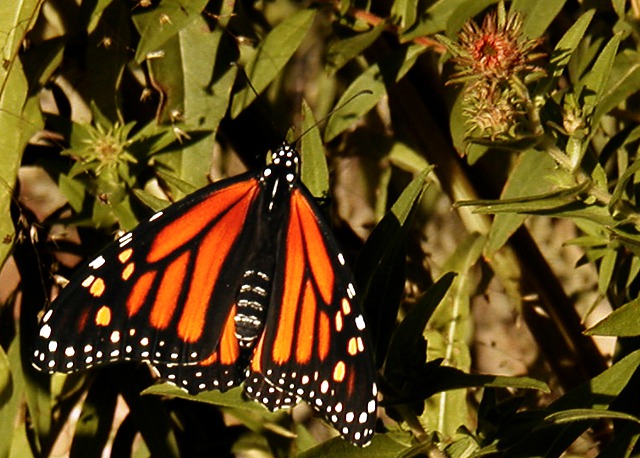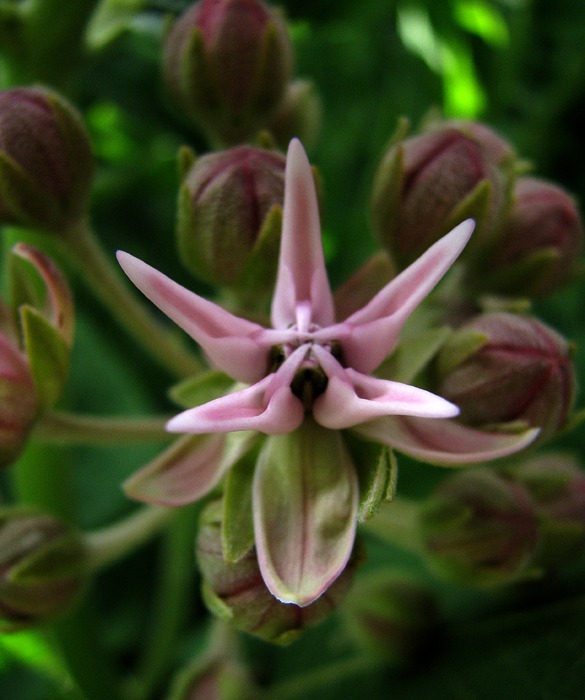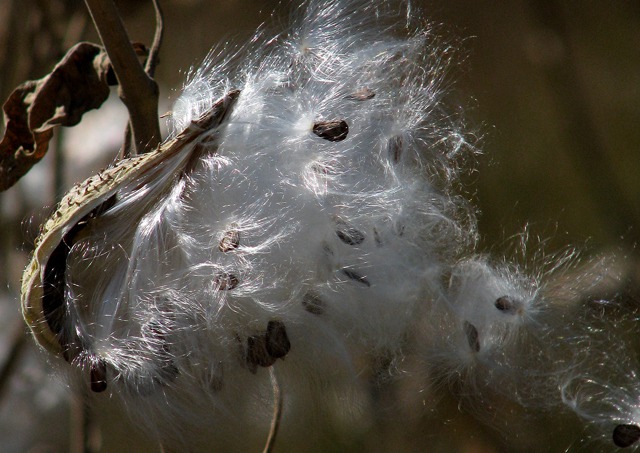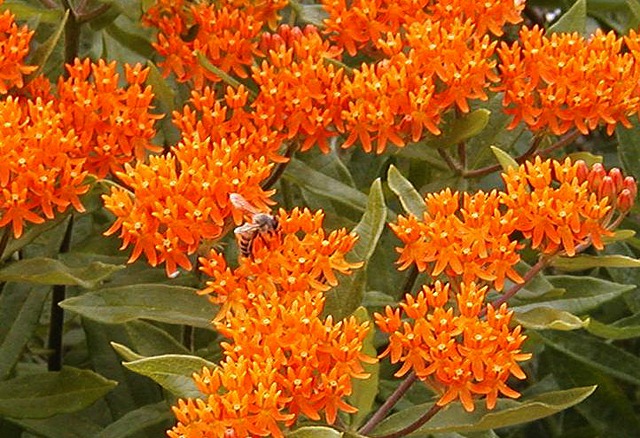Milkweed and Monarch Butterflies
The first caterpillar inched its way along the swamp milkweed (Asclepias incarnata), systematically devouring the lance-shaped leaves. Dozens of monarch caterpillars, each ultimately as big around as my little finger with chalk white bodies striped black and yellow-orange in precise ink-like strokes, stripped the plants in their drive to become chrysalides.
In the second year, a female Monarch butterfly found the plants and laid her eggs. For two weeks in August, the caterpillars emerged, ate, and grew. I covered the plants with nylon mesh to discourage birds and wasps hunting for an easy meal.
One by one, the caterpillars disappeared. In the mornings, I watched large ones become restless, searching rather than eating. By evening, when I returned home, the caterpillars were gone. Did they successfully find a safe place to build the chrysalides? Did the birds take them? Was this bit of habitat sufficient for their needs?
Cold, rainy weather two weeks later hampered the emergence of the butterflies.
The few warm, dry days occurred while I was at work or on vacation. I hoped, though, that some of the Monarchs migrating south that fall came from my yard. Over the winter, I researched the complete habitat requirements to be sure I provided safe places for chrysalides.
Another wild garden lined my route to work that summer of 2001. The Department of Transportation left the roadsides and ditches unmowed, and a profusion of wild plants grew along I-90. Purple, white, and yellow clover filled the July days with heavy perfume. Brilliant yellow sunflowers with brown centers glowed in the late fall afternoons.
Grasses changed from spring lime green to dark summer green, small flowers followed by heavy seed heads. Shorter fall days changed the grasses to gold, red, and pale yellow. Small cottonwood sprouts fluttered in the wind.
In July, common milkweed (Asclepias speciosa) flourished in soft green patches, tall upright stems lined with big oval leaves covered with fine, soft hairs. Purplish-pink umbrels of flowers opened at the top of the stems.
The wildflower book tells me this plant supports 18 species of wildlife – insects, bees, caterpillars, and butterflies. The weed book tells me milkweed sap is poisonous to livestock. The butterfly book points this out as a real advantage to the caterpillars that eat the leaves, making them unpalatable to birds.
Do the many drivers on the highway know what is unfolding in the ditches? Life continues as the plants provide food and shelter through the summer. The simple decision to not mow means life for native grasses and insects. As long as milkweed flourishes, caterpillars devour leaves; butterflies emerge; bees gather food.
When the DOT mowers arrived in early September, the life cycle of most species was complete, and the mowing was similar to the fall prairie fires that used to sweep the Plains.
On an unseasonably warm day in October that year, my friend Denise and I scrambled through sharp dry grass in the ditch, gathering milkweed seeds. The creamy tan pods, covered with prickles like small cucumbers, were bursting with feathery seeds. The soft white umbrellas, designed to carry the teardrop brown seeds far and wide across the prairie, glowed in the sun. I filled a plastic bag with pods and seeds.
On planting day, the breeze carried the silky glistening umbrellas around me. They stuck to the pile of my jacket and caught in my hair, capturing the sunlight. I shook my arm, and they floated into the blue sky.
I read that pioneers used these soft downy seeds to stuff cushions. Carefully, I planted the brown seeds in two flowerbeds of native plants and in the field. The air around me filled with fluff as I freed each seed from its carrier. Then, in the heart of winter, I had the seed pods on my shelf as a promise of butterflies in the summer.
And that common milkweed flourished! I wouldn’t recommend it to the home gardener because it is so hardy and aggressive; it spreads for tens of feet with rhizomes as big as my finger! But the flowers are beautifully intricate with heavenly perfume, so I just pull it up where I don’t want it.
Now a note for more traditional gardeners -- butterfly milkweed (Asclepias tuberosa) with its yellow-orange flowers is a nice garden plant. The butterflies like it, although not as well as the other varieties, and it is very well behaved.
-Louise with photos by Louise and Brian
text and photos copyright GoinMobyle, LLC 2009


